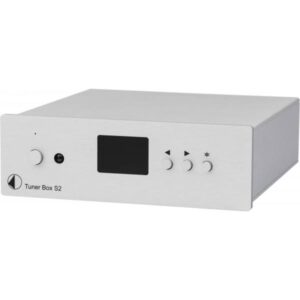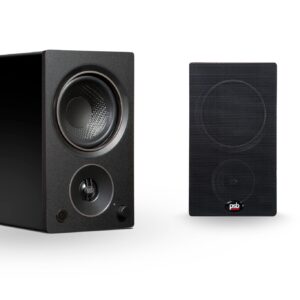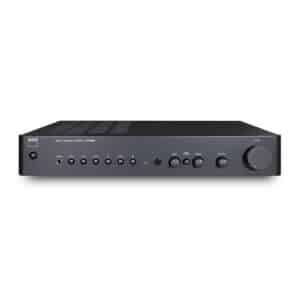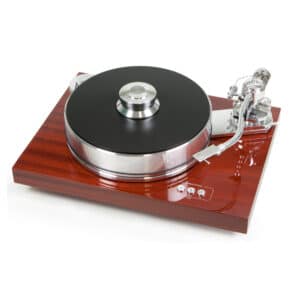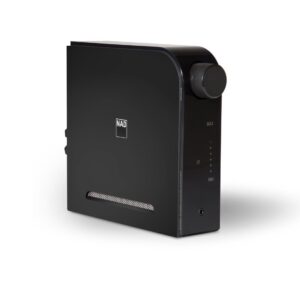- Ma-pe 9-17 La 10-14
- Ilmainen toimitus yli 100€ tilauksiin
Todellinen audiofiililevy
• 2x180gr Virgin Vinyyli
• Kokonaan uusi studio tallennus (2012)
• Kokonaan analoginen äänitys ja masterointi
• Mukana voucher mp3 albumin lataamiseksi
Wiener Symphoniker
Conductor: Fabio Luisi
1. Langsam, schleppend. Im Anfang sehr gemächlich
2. Kräftig bewegt, doch nicht zu schnell
3. Feierlich und gemessen, ohne zu schleppen
4. Stürmisch bewegt
Brand new audiophile recording in 2LP vinyl edition!
For the first time since the 1990s a famous and important orchestra and a very important conductor are making a completely new TRUE ANALOGUE recording: The Vienna Symphony Orchestra, the city of Vienna’s renowned orchestra, conducted by Fabio Luisi, proudly presents the first production of its own, newly founded label "Wiener Symphoniker" in cooperation with Pro-Ject Audio Systems.
The vinyl edition is limited to 3000 copies and was supervised by selected audio experts. A special analog Mastering on original panels, as well as a careful, limited pressing slide are the prerequisites for a unique sound experience. Each movement is cut to one LP side, to cover the entire analogue frequency range.The pressing of this double LP was done on high-quality 180 gr. vinyl.
The first release is a paradigmatic example of the Wiener Symphoniker's core repertoire. Gustav Mahler's 1st Symphony in D major was written only four years before the orchestra was founded in 1900. So, not surprisingly, Gustav Mahler's symphonies and their interpretational challenges were among the main interests of the orchestra and its many renowned conductors from the very beginning. Above that Mahler's Symphony "No. 1", being the first oeuvre of a Vienna revolutionary, is more than suitable for the start of a new Vienna orchestra label.

Wiener Symphoniker (Vienna Symphony Orchestra)
The Wiener Symphoniker handles the lion’s share of symphonic activity that makes up the musical life of the Austrian capital. The preservation of the traditional, Viennese orchestral sound occupies a central place in the orchestra’s various artistic pursuits.
The end of the 19th century was precisely the right time to establish a new Viennese orchestra for the purpose of presenting orchestral concerts with broad appeal, on the one hand, and to meet the need for first performances and premieres of contemporary works, on the other.
In October 1900, the newly formed Wiener Concertverein, as it was called back then, gave its first public performance at the Vienna Musikverein with Ferdinand Löwe on the podium. The Wiener Symphoniker has premiered works that are now undisputed staples of the orchestral repertoire, including Anton Bruckner’s Ninth Symphony, Arnold Schönberg’s Gurre-Lieder, Maurice Ravel’s Piano Concerto for the Left Hand, and Franz Schmidt’s Th e Book with Seven Seals. Over the course of its history, conducting greats like Bruno Walter, Richard Strauss, Wilhelm Furtwängler, Oswald Kabasta, George Szell and Hans Knappertsbusch have left an indelible mark on the orchestra. In later decades, Herbert von Karajan (1950–1960) and Wolfgang Sawallisch (1960 –1970) were the Chief Conductors who moulded the sound of the orchestra most signify cantly. After the brief return of Josef Krips, the position of Chief Conductor was filled by Carlo Maria Giulini and Gennadij Roshdestvensky. Georges Prêtre was Chief Conductor from 1986 to 1991. Rafael Frühbeck de Burgos and Vladimir Fedoseyev then assumed leadership of the orchestra. Fabio Luisi accepted the position of Chief Conductor and Artistic Director at the start of the 2005– 06 season, his successor in 2014–15 will be Philippe Jordan. Leading lights who have enjoyed notable success as guests on the podium of the Wiener Symphoniker include Leonard Bernstein, Lorin Maazel, Zubin Mehta, Claudio Abbado and Sergiu Celibidache.
The Wiener Symphoniker appears in more than 150 concerts and operatic performances per season, the vast majority of which take place in Vienna’s well-known concert venues, the Musikverein and the Konzerthaus. Since 1946, the Wiener Symphoniker has been the orchestra in residence at the Bregenzer Festspiele, where it also plays the majority of operatic and symphonic performances. The orchestra also took on a new challenge at the beginning of 2006: That’s when the Theater an der Wien became a functioning opera house again, and the orchestra has been responsible for a signficant number of productions ever since.

Fabio Luisi was born in Genoa in 1959 and began to play piano at the age of four. Luisi received his diploma exam in piano at the Niccoló Paganini Conservatory in Genoa in 1978. He then continued his piano studies with Antonio Bacchelli and Aldo Ciccolini in Paris. Further Luisi began conducting studies under Milan Horvat at the Musikhochschule in Graz. Luisi received his conducting diploma with honours in 1983 and took up his first position as an opera coach and conductor at the Graz Opera that same year. In 1984, he made his conducting debut with Cimarosa’s Requiem in Martina Franca. Luisi left the Graz Opera to begin his international career in 1987. In 1989, he debuted in Il barbiere di Siviglia at the Bayerische Staatsoper Munich.
Le nozze di Figaro at the Staatsoper unter den Linden Berlin, and Tosca (which he calls his “fateful opera”) at the Wiener Staatsoper. Since making successful debuts at the aforementioned houses, he has been a regular guest conductor for repertory productions, revivals and new productions. He celebrated his American debut in 2000 with a new production of Rigoletto at Chicago’s Lyric Opera. In 2002, he debuted at the Salzburger Festspiele in a new production of Die Liebe der Danae, followed by a concertante performance of Die Ägyptische Helena that led to an ongoing collaboration with the Sächsische Staatskapelle Dresden.
Luisi’s path in the symphonic realm also began in the city where he studied conducting. The Grazer Symphonisches Orchester was re-established under his artistic direction in 1990. The second half of the 90s was marked by career building in terms of live concerts, radio recordings and CD projects, and three orchestras took part in these activities: In 1995, he became Artistic Director and Principal Conductor of the Tonkünstler-Orchester Niederösterreich and in 1996 Artistic Director of the Symphonieorchester des Mitteldeutschen Rundfunks in Leipzig. In 1997 Luisi was appointed Artistic and Music Director of the Orchestre de la Suisse Romande in Geneva. In February 2000, Fabio Luisi made his U.S. debut with the New York Philharmonic. Moreover, beginning in the 2007–08 season.
Luisi was appointed Musical Director of the Sächsische Staatsoper Dresden and Principal Conductor of the Sächsische Staatskapelle, following in the footsteps of such figures as Fritz Busch,Karl Böhm, Josef Keilberth, Rudolf Kempe and Giuseppe Sinopoli. Since 2005 Luisi has been Chief Conductor of the Wiener Symphoniker, beginning in the 2012–13 season, he became Music Director of the Zurich Opera. In September 2011, Luisi has also been appointed as Principal Conductor of the Metropolitan Opera in New York.
